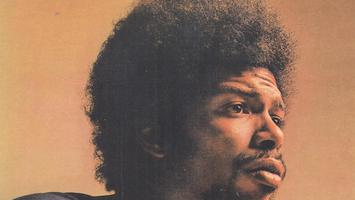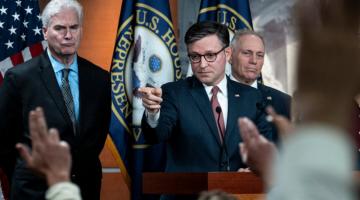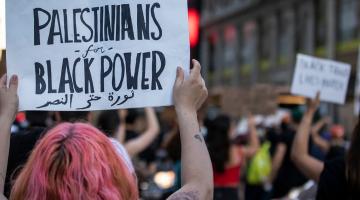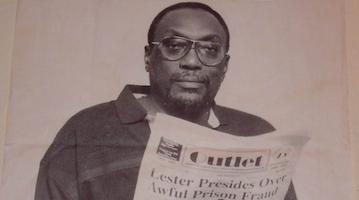Bostock v. BLM: Two Conflicting Visions of Equality
One approach treats injustice as discreet individual actions, the other recognizes the weight of world history.
“The two theories of equality serve the interests of different social sectors.”
Over the last month a contest between two visions of equality has broken out in U.S. politics that has profound implications for the law.
One vision appears in the Supreme Court’s recent decision in Bostock v. Clayton County, which ruled to extend labor-market discrimination protections to trans and gay employees. At first glance the ruling may seem a cause for celebration. After all, the Court repudiated a longstanding narrow interpretation of Title VII’s rule against “sex” discrimination, conceived by a die-hard segregationist in the House of Representatives in 1964 and read to exclude gay and trans plaintiffs for decades. But the route it takes to that conclusion is itself quite narrow. Violations of Title VII, the majority wrote, are simply a matter of one person’s “intention” to treat “individuals, not groups” less favorably.
Call this the transactional vision of equality. It looks to the granular motives of particular individuals rather than to the large-scale effects of institutions, appealing to a narrow framework of one individual slighting another. In this discriminatory paradigm, inequality results from a culpable offender with a particular state of mind denying a meritorious plaintiff a benefit they are due. The framework of transactional equality, in short, searches for glitches that interfere with an otherwise healthy flow of outcomes for individuals.
The other vision of equality is manifest in the Black Lives Matter (BLM) movement, which during the past several months has precipitated a dramatic shift in U.S. public opinion on police treatment of people of color. Call this the infrastructural model of equality, which challenges institutional and social arrangements beyond the immediate interactions of individuals. Discrete acts of denial and violence instead are treated as symptoms of larger pathologies rooted in the state’s organization and funding. The BLM movement does not explicitly appeal to equality in its messaging; its position is “unapologetically Black,” its platform established in response to “rampant and deliberate violence inflicted on us by the state.” But its call to counter the weight of persisting and historical injustice might well be understood as a fight for the rectification of historical inequality and discrimination. And the force of BLM’s moral vision is powerful not in spite of institutional context, but rather precisely because of it—including, but not limited to, the history of policing in the United States. The argument in Bostock, by contrast, repudiated historical context in favor of a contemporary close reading of the text of Title VII.
“Discrete acts of denial and violence are treated as symptoms of larger pathologies rooted in the state’s organization and funding.”
BLM’s lens is wider than Bostock’s. To begin with, even as the movement is propelled by particular acts of state violence—against Rayshard Brooks, George Floyd, Eric Garner, and so many others—it deliberately distances itself from the individualized, atomistic narrative of racist police officers amounting to a few “bad apples.” Though BLM does advocate for terminating particular officers in cities with long histories of police torture, such as Chicago, the movement does not focus on lone malefactors—it is not reducible to singular injustices. And BLM’s platform does not appeal to notions of merit like the ones operative in the Bostock decision (such as being qualified for a job). Instead, the movement insists that the good of public safety long denied Black and Brown individuals is a matter of basic entitlement, not something that need be earned or justified. And most telling, BLM’s remedies do not issue in the form of benefits to specific individuals, as is customary in the federal law of workplace discrimination. Rather, its campaign calls for changes to the institutional channels through which state power flows, beginning with a fiscal pivot from “crime” control to “poverty” control.
Are these two visions necessarily at odds? On the one hand, there is a superficial congruence between the transactional and infrastructural models. A municipality surely can slash its police budget, for example, while simultaneously protecting gay and trans people from employment bias. And yet, within days of the Bostock decision, a tension emerged between the two visions. Within the labor movement, the AFL-CIO supported the Bostock plaintiffs by filing an animus brief in the Supreme Court. But the union’s leadership also resisted calls to break with police unions made by Seattle and Los Angeles locals. Police unions have served as critical institutional engines for shielding officers who perpetrate egregious violence, especially against minorities. They are currently fighting a fierce rearguard against reform in many cities.
“Police unions have served as critical institutional engines for shielding officers who perpetrate egregious violence.”
The internal conflict within the union movement suggests one specific tension between the transactional and infrastructural models of equality, but there are others, and they have significant implications for the law.
First, and most narrowly, Bostock’s transactional account of equality conflicts with some of the legal instruments used to mitigate structural inequality. In particular, Bostock threatens to undermine what are known as “disparate impact” theories of discrimination, resulting in the elimination of a tool for structural reform taken directly from the infrastructural toolkit.
Several federal antidiscrimination laws, including Title VII of the Civil Rights Act, allow plaintiffs to challenge two kinds of discrimination: acts of “disparate treatment” (the technical term for intentional discrimination) and policies with solely a “disparate impact” due to race or gender (with no requirement of intent). The second of these categories, disparate impact challenges, have historically attacked structural impediments for women and minorities in the workplace. In states where disparate impact has been adopted into state law, antidiscrimination law can confront inequalities in policing and thus advance infrastructural equality. For example, community groups in Chicago used a state disparate-impact law to challenge a policy that resulted in longer response times to 911 calls in Black and Latino neighborhoods. The scope of disparate impact remedies, however, can vary greatly: they can accommodate defendants’ institutional interests and allow only minimal change, or they can advance more radical transformation.
The transactional model of equality can push disparate impact toward its narrower, more conservative form. In the 2009 case Ricci v. Destafano, the Supreme Court limited the use of disparate impact under Title VII. It did so on the theory that addressing racial disparities could lead to harmful “race-conscious” thinking. According to the Court, this would then contravene the ban on intentional disparate treatment. Bostock’s broad and intentionalist understanding of what it means to act “because of” sex or race deepens the perceived conflict between disparate treatment and disparate impact. Indeed, Bostock could be cited to dramatically curtail what remains of disparate impact.
Second, the two theories of equality serve the interests of different social sectors. Those who already claim merit as defined under an institutional status quo are more likely to appeal to transactional equality. On the other hand, those challenging institutional arrangements and their merit-based organization are more likely to invoke infrastructural equality. To the extent that these two kinds of interests are in conflict with one another—as may be the case in the labor movement—their corresponding visions of equality are prone to clash.
In Ricci, for example, a group of mostly white firefighters challenged a municipal decision to install a minority-friendly promotion test on the ground that it negated their merit-based promotions. The Ricci plaintiffs understood “merit” in a narrow, individualistic way. In contrast, the city’s decision to use a promotion test friendlier to historically underrepresented Black firefighters relied on a different understanding of “merit”—one more attentive to the history and lived experience of racial inequalities. An infrastructural account of equality does not assume that the present allocation of talents and advantages are inevitable or natural. Rather, it questions their systemic origins. Examining a case like Ricci with an infrastructural vision of equality means thinking about how extant structures of privilege build on and recapitulate exclusion.
“Those challenging institutional arrangements and their merit-based organization are more likely to invoke infrastructural equality.”
Third, and finally, the two visions of equality differ in their positions on status quo institutions. Whereas transactional models of equality tend to accommodate existing market and state structures, infrastructural equality subjects them to interrogation. A transactional model of equality assumes that once irrational bias is shunted away, a just allocation of goods will follow. This obviously does not align with BLM’s account of institutions, which emphasizes the ways they have preserved hierarchies of race, gender, and sexual orientation and asks how society might be rearranged to benefit all.
Conflicts of this kind may help to explain the seemingly contradictory positions of the AFL-CIO: at once sympathetic to the status quo owing to its police unions, and simultaneously pushed to challenge those same arrangements by the SEIU and more radical unions. At stake is whether the labor movement will continue to defend institutional arrangements, or whether a vision of an equal and just workplace will impel their transformation.
As many observers will note, the transactional/infrastructural distinction echoes and transforms an older fight over equality in the United States. Progressives on the political left have long resisted a “colorblind” ideal of equality advanced by the political right as an interpretation of the Equal Protection Clause, instead proffering an “anti-subordination” theory of equality. Bostock echoes the first, sex-blind ideal; BLM sounds plainly in the anti-subordination register.
But it would be a mistake to position the transactional/infrastructural divide in terms of that older dichotomy. This new fissure is not solely a matter of differing conceptions of equality. Rather, it forces us to question how much of the social and economic world we hold constant when demanding equality. It thus invites profound and far-reaching disagreements about both the tactics and the reach of movements for equality. Here, it might even be possible to draw a distinction of kind: the older fight is best conceived as an effort to reform a certain market-friendly liberal tradition of late twentieth century U.S. politics. In contrast, the newer conflict positions reform against abolition of those institutions as they presently exist.
To understand how far we’ve moved since the fight between anti-classification and anti-subordination, consider how the implications of each of those terms have shifted. During the Jim Crow era, claiming that “our constitution is colorblind” could work as a demand for radical infrastructural equality. Embedded in that term was a radical and destabilizing challenge to basic social and economic structures that relied on formal racial classifications. Today, however, racial hierarchies operate through superficially race-neutral forms such as criminal justice and residential policy. Contemporary arguments in favor of colorblindness tend to shield these mechanisms from condemnation. For this reason, they can be either transformative or conservative depending on context.
“Racial hierarchies operate through superficially race-neutral forms such as criminal justice and residential policy.”
On the other hand, anti-subordination has often been understood to compel a species of disparate impact liability. In practice this theory of liability has been narrowly read. It accommodates, rather than challenges, most employers’ preferences, taking their prerogatives as a given. Thanks to this elasticity, the law of disparate impact has been given only weakly transformative readings and has accommodated many structures of workplace exclusion inherent to neoliberalism. Perhaps the most striking element of BLM’s infrastructural vision is its rejection of these hollow calls for change. Instead, the BLM movement calls for a sweeping and comprehensive change in political and social life, and so transforms disparate impact into a true instrument of infrastructural equality.
It is too early to predict or envision a resolution to the tensions between BLM’s and Bostock’s visions of equality. On some issues, such as the immediate question of workplace discrimination, they may agree on results, if not on method. It may be more difficult to find agreement on the direction of the labor movement given the profound differences in interest between police unions and, say, the SEIU’s rank and file. These visions are also likely to diverge on the specific legal question of how disparate impact remedies should be read.
More broadly, the transactional and infrastructural visions of equality represent not only technically different conceptions of equality, but profoundly different aspirations for social change. They will determine how much hope for enduring, foundational change can percolate into the heart’s chambers, and how much acquiescence to the brute institutional facts of the present neoliberal order we can allow. On that margin, no agreement is likely to emerge soon.
Aziz Z. Huq is Professor of Law at the University of Chicago and coauthor of Unchecked And Unbalanced: Presidential Power in a Time of Terror.
This article previously appeared in Boston Review.
COMMENTS?
Please join the conversation on Black Agenda Report's Facebook page at http://facebook.com/blackagendareport
Or, you can comment by emailing us at comments@blackagendareport.com


















